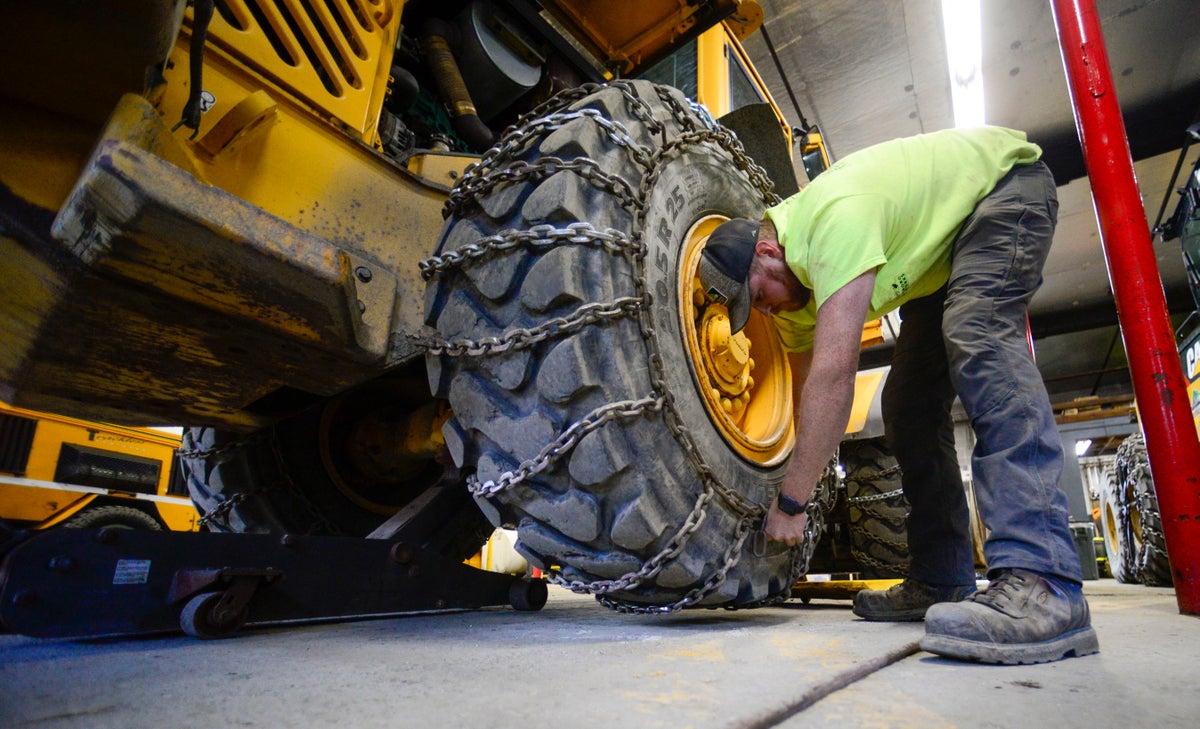
Residents across the eastern U.S., particularly in New England, are gassing up their snow blowers and dusting off their shovels as they gear up for a wintry mix of precipitation as a potent storm system bringing snow, freezing rain and ice bears down on the region.
The system was expected to track along the northeastern coastline throughout the weekend, with the heaviest snowfall expected in Pennsylvania, parts of the Hudson Valley and portions of New England.
Winter storm warnings and watches were in effect throughout the Northeast.
In Massachusetts and portions of Rhode Island, the National Weather Service declared a winter storm warning from 4 p.m. Saturday through 1 a.m. Monday with snow accumulations of six inches up to a foot and winds gusting as high as 35 mph.
The weather service is predicting much the same levels of snow in portions of Maine and New Hampshire with slightly less — three to six inches — in areas of Vermont.
Boston Mayor Michelle Wu said the city was preparing for the snowstorm but wasn’t expecting it to be a major event, and the timing of the snow means it would likely have less of an impact on city life. Storm surges were also not expected.
Wu said she hopes the snow will be cleaned up in time for school Monday morning.
Massachusetts Gov. Maura Healey said while the state isn't expecting record-breaking snow, she urged residents to protect themselves and their loved ones by making sure homes stay safely heated.
“Please also take some time to check in on your neighbors to make sure everyone stays warm and safe,” she said.
Greg Carbin, chief meteorologist at the National Weather Service, said precipitation in the form or rain or snow is expected to overspread the Mid-Atlantic region Saturday and develop across areas of Pennsylvania and upstate New Jersey and before spreading across parts of New York and New England through the night with snow totals of up to 12 inches.
“We’re keeping a close eye, especially on Boston. They could pick up quite a bit of snow. Most areas in interior New England should see anywhere from half a foot to a foot of snow with this event before it starts to wind down,” Carbin said.
The National Weather Service in Mount Holly, New Jersey, said six to 12 inches of snow could fall in the southern Pocono mountains and northern New Jersey, with smaller snow and sleet totals changing to rain in other areas that could cause some flooding. Forecasters also warned of hazardous marine conditions Saturday night with gale-force wind gusts and 6-foot to 10-foot (1.8 meters to 3 meters) seas and minor coastal or tidal flooding.
Forecasters also warned of another storm Tuesday into Wednesday that was expected to bring two to three — or even four — inches of rain and some flooding as well as possibly “damaging winds” bringing down trees and power lines and perhaps “significant coastal flooding” during high tides.
For the number of consecutive days with less than an inch of snow, Philadelphia reached 705 days through Friday — beating the prior record of 661 days that ended on Dec. 15, 1973. New York City went 691 days through Friday, outstripping the prior record of 383 days that ended on March 21, 1998. Baltimore reached 707 days through Friday, a record, with a prior record of 672 days that ended on Dec. 25, 2012.
Pedro DiNezio, associate professor of oceanic and atmospheric science at the University of Colorado Boulder, said the pattern of rain — rather than snow — in the fall and winter has been predicted by climate models.
“It will snow less frequently and more of the storms will dump rain as opposed to snow in the U.S. Northeast,” he said.
Connecticut Gov. Ned Lamont says it’s been about two years since a major storm hit the state.
“I think this storm’s been a long time coming,” Lamont said. “It’s been over two years since we’ve had a storm of this magnitude, 6 to 12 inches. We’ve got a lot of salt piled up here; it’s been piling up for a while (and) some shiny new snowplows.”
State Transportation Commission Garrett Eucalitto said his department will have about 900 drivers on duty, including 630 snowplows.
Parts of central Maine were hit hard by a December storm that brought flooding and cut power to more than 400,000 customers in a state of less than 1.4 million people.







